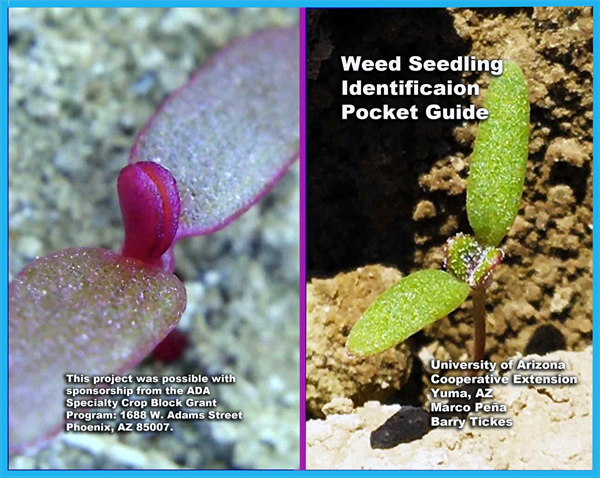
In arid and semi-arid regions, water is our first limiting factor in a crop production system, followed closely by bio-available nitrogen (N). Thus, our management of water and N are critically important to produce a healthy crop with good yields and quality.
Water and nutrient demands coincide with the fruiting cycle and efficient management of irrigation water and plant nutrients is enhanced by tracking crop development in the field. The use of heat units (HUs) with 86/55 oF upper and lower thresholds can be applied to warm season crops in the desert Southwest in relation to the thermal environmental impacts on the development of all crop systems (Brown, 1989), including chiles, (Figures 1 and 2).
Crop Phenology Relationship to Water and Nitrogen Demand
Phenological guidelines have been developed for many crops, including New Mexico type chiles (Soto-Ortiz and Silvertooth, 2007 and Silvertooth, et al, 2010; Figure 1). This phenological guideline can be used to identify or predict important stages of crop development that impact physiological requirements. For example, a phenological guideline can help identify stages of growth in relation to crop water use (consumptive use) and nutrient uptake patterns (Figure 3).
This information allows growers to improve the timing of water and N inputs to improve production efficiency. For some crops or production situations HU based phenological guidelines can be used to project critical dates such as harvest or crop termination. Many other applications related to crop management (e.g., pest management) can be derived from a better understanding of crop growth and development patterns.

Figure 1. Typical relationship between the rate of plant growth and development
and temperature. Growth and development ceases when temperatures decline
below the lower temperature threshold (A) or increase above the upper
temperature threshold (C). Growth and development increases rapidly when
temperatures fall between the lower and upper temperature thresholds (B).

Figure 2. Basic phenological guideline for irrigated New Mexico-type chiles.
References
Brown, P. W. 1989. Heat units. Bull. 8915, Univ. of Arizona Cooperative Extension, College of Ag., Tucson, AZ.
Silvertooth, J.C., P.W. Brown, and S. Walker. 2010. Crop Growth and Development for Irrigated Chile (Capsicum annuum). University of Arizona Cooperative Extension Bulletin No. AZ 1529
Soto-Ortiz, R. and J.C. Silvertooth. 2007. A Crop Phenology Model for Irrigated New Mexico Chile (Capsicum annuum L.) The 2007 Vegetable Report. Jan 08:104-122.
Interested in the latest automated weeding technologies? University of California Cooperative Extension will be hosting the 2024 Automated Technology Field Day where twelve of the newest commercial and academic thinning and weed control technologies will be demonstrated in the field. Featured technologies, some showcased for the first time to a general audience, include a high voltage electric weeder that kills weed seed pre-emergence, laser weeders (two types), “smart” precision spot sprayers (four types), “smart” in-row cultivators (four types), and the UA/UC Davis smart steam applicator for killing weed seed and soilborne pathogens pre-emergence. Company representatives and university personnel will be on hand to discuss their equipment. The event will be held from 9:00 am – 12:00 noon, Thursday, June 27th in Salinas, CA. For additional information, see the event flyer below.
Before making decisions for weed control it’s imperative to have a proper identification of the plant species. There are two names for plants:
The common name, which is a name that people come up with in a certain region to describe a particular weed and it varies by region and therefore can be confusing. Then we have an exact scientific name for each species that is based in the binomial nomenclature system started by Carl Linnaeus in 1753. This binomial (or two term) system includes the genus and the species, which is used worldwide1.
Some very close species from the same family can be controlled by the same product but occasionally their herbicidal susceptibility varies. Such is the case of Chenopodium murale (goosefoot) and Chenopodium album (lambsquarter) two very close and similar species. A product like Pursuit (Imazethapyr) has good activity on goosefoot but can’t control lambsquarters. With accurate identification in a mixed population, you would be able to determine what strategy to use or select the herbicide that would control both species.
There are about 75 weeds most common in Arizona and are included in the PCA2 study guide, but many other species could be introduced to the State and complicate our crop production systems. Two great tools for weed identification are the books “An Illustrated Guide to Arizona Weeds” that lists 172 species, and “Weeds of California and Other Western States” which has at least one photograph of 735 weeds.
Another weed identification tool is the book “Weeds of the West”.
Additionally, there are many phone applications that can be used as identification tools such as “id weeds”, “PlantNet”, “PictureThis”, “iNaturalist”, “Seek”, “PlantSnap” and “LeafSnap”. When we have problems with weed ID we contact the UA herbarium.
Thank you for sending samples for Weed ID to the IPM Team it is always a learning experience.
